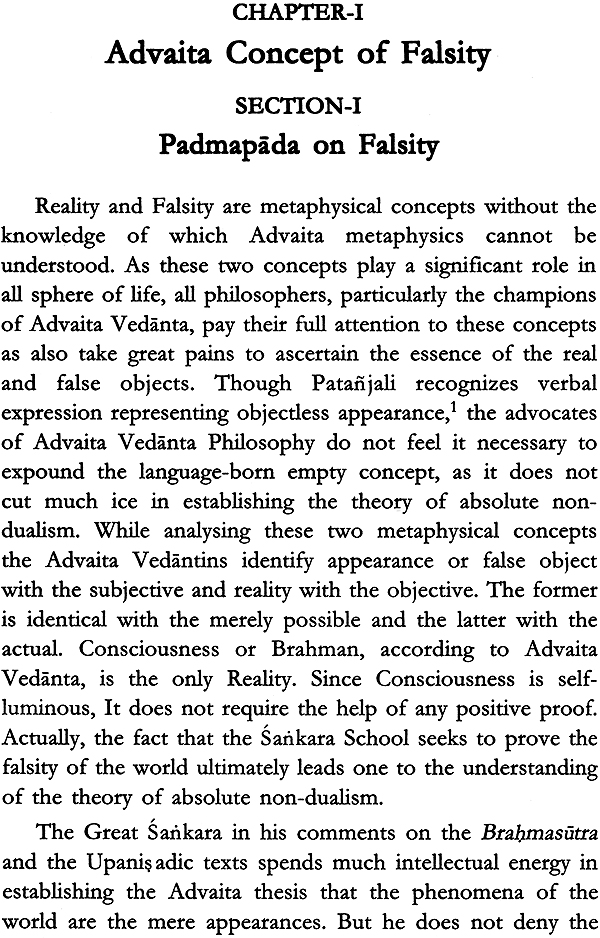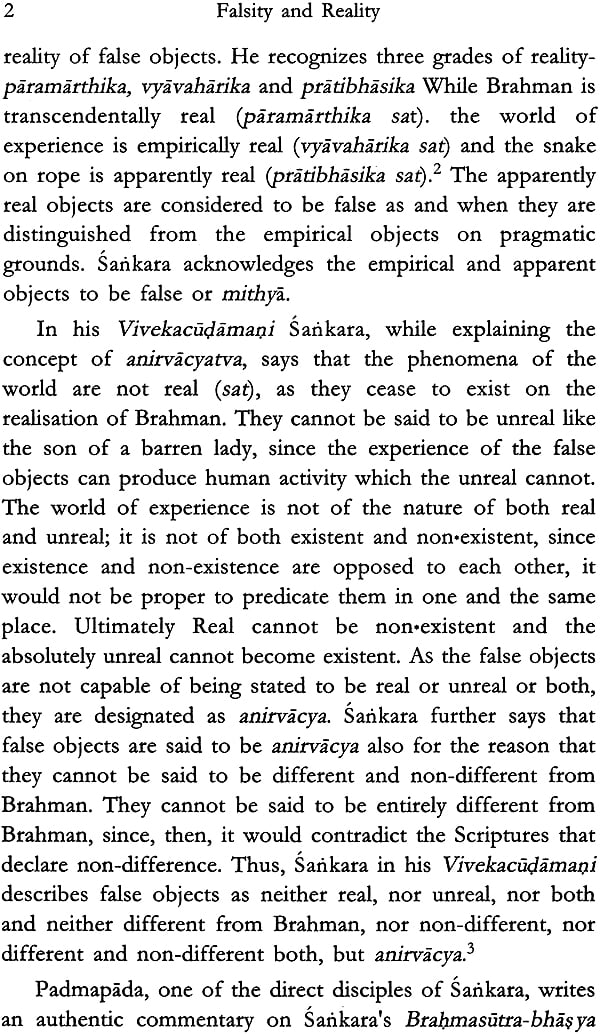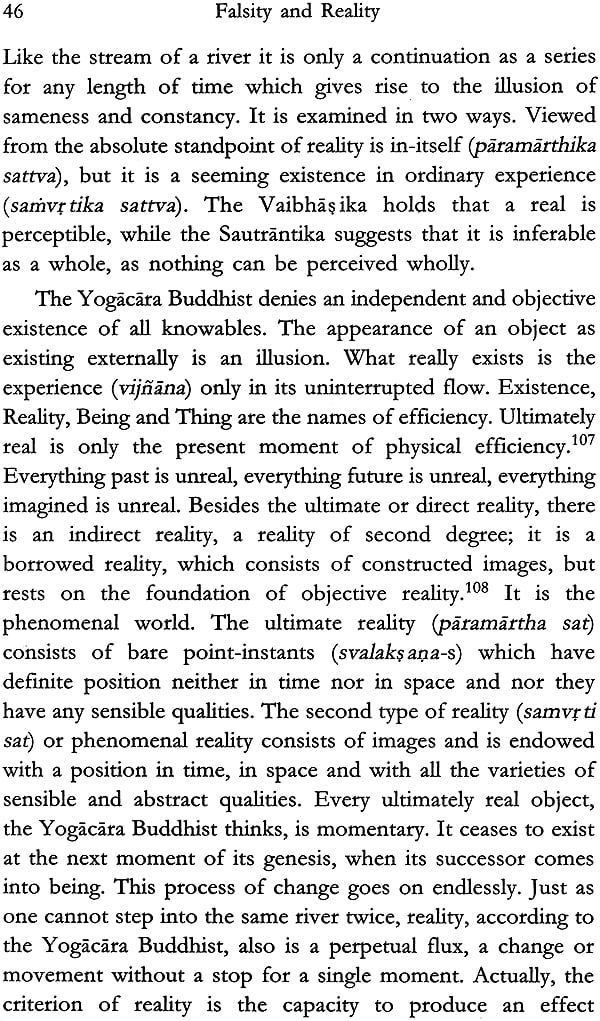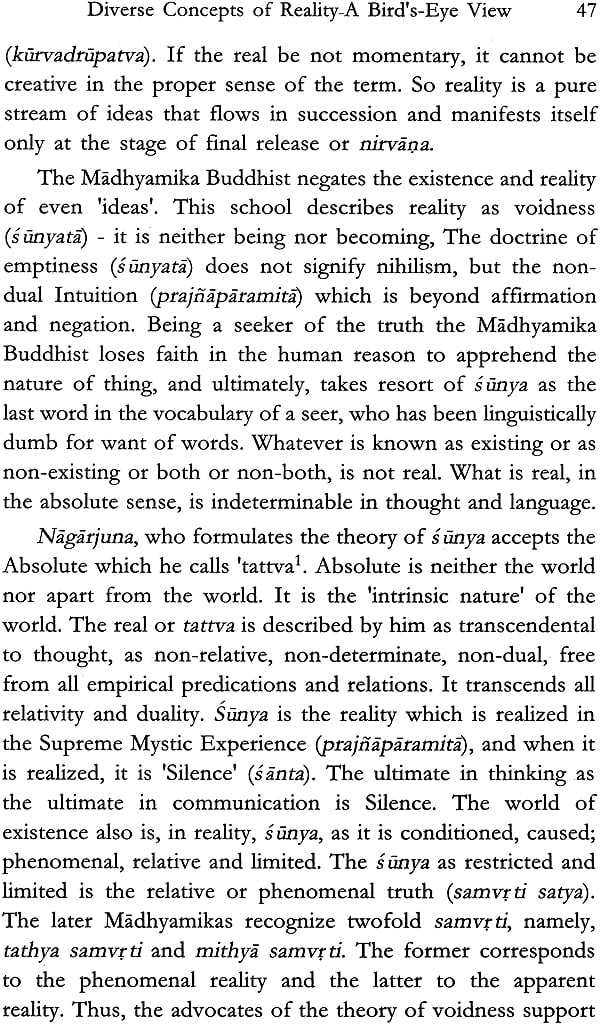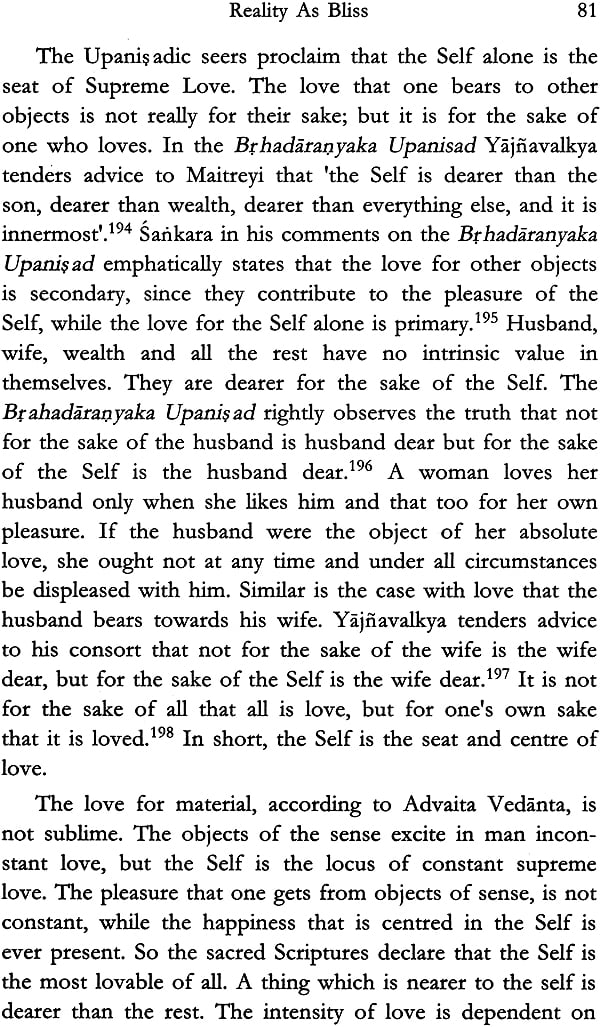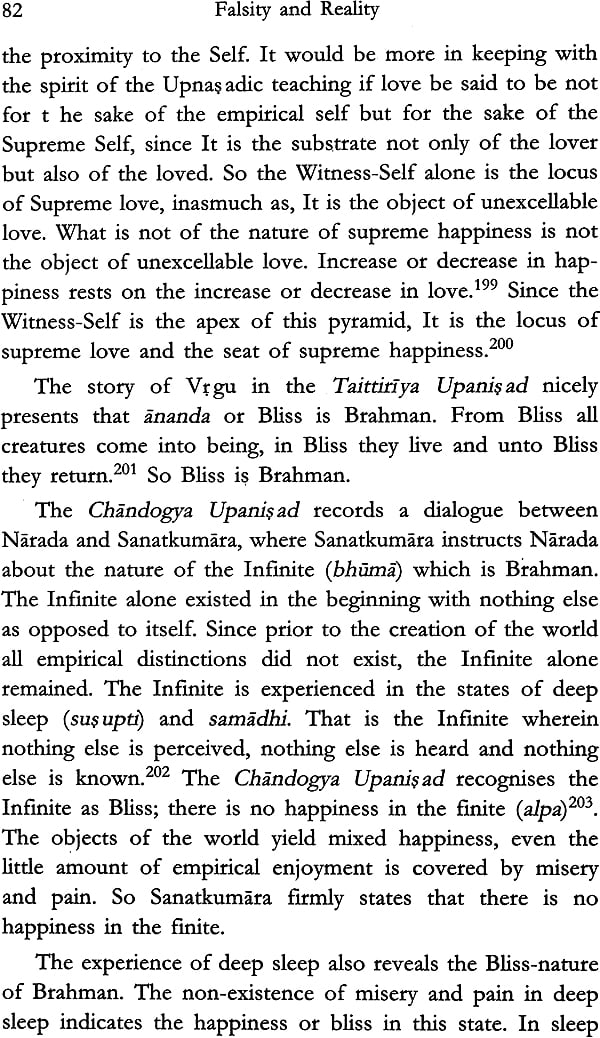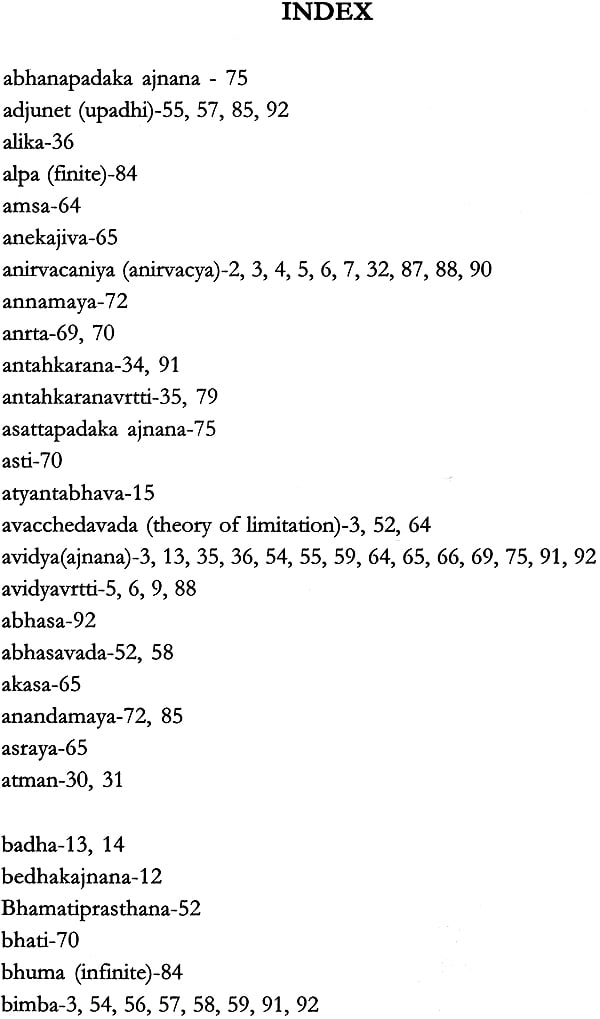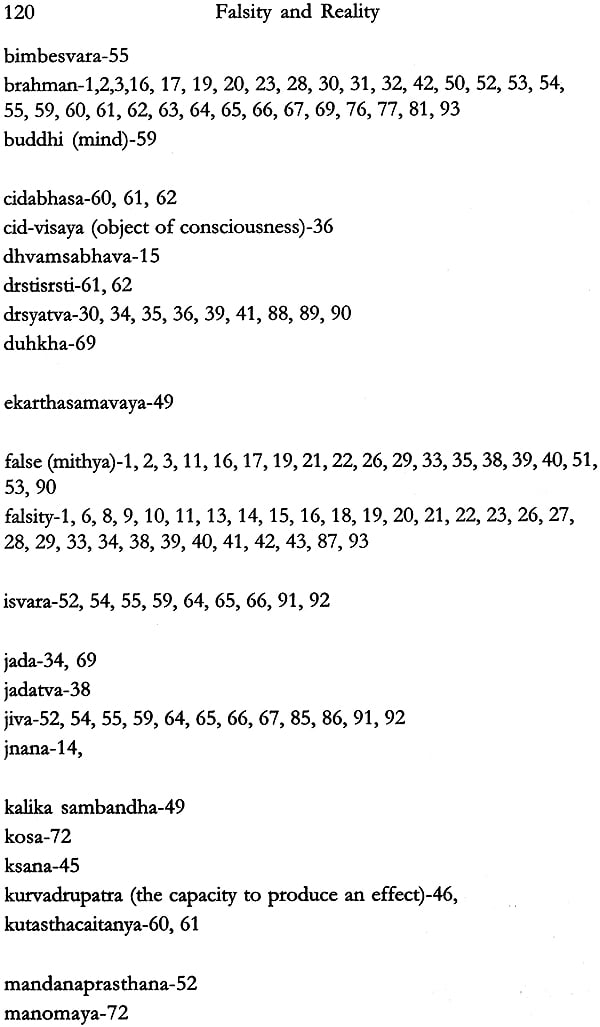
Falsity and Reality (An Advaita Approach)
Book Specification
| Item Code: | NAM699 |
| Author: | Mridula Bhattacharyya |
| Publisher: | Maha Bodhi Book Agency |
| Language: | English |
| Edition: | 2015 |
| ISBN: | 9789384721299 |
| Pages: | 128 |
| Cover: | Hardcover |
| Other Details | 8.5 inch x 5.5 inch |
| Weight | 300 gm |
Book Description
The monograph presents the metaphysical status of falsity and reality in the field of Advaita Vidanta Philosophy. It goes deep into the concept of falsity (mithyaatva) as enunciated by Sankara, Padmapada, Prakasataman, Anandabodha, and Citsukha. It does with falsity of the world and the falsity of falsity particulary from Madhusadana’s point of view.
It spends considerable energy in analyzing the empirical reality and ultimate reality. The author has tried to project the Advaita position that falsity and reality are not mutually opposed: the false is as much real and its locus.
Born on Ist January, 1966 in a Brahmin family at Hossainpur, in the district of Burdwan, West Bengal and having a brilliant academic record, Dr. Mridula Bhattacharyya is presently attached to the University of Burdwan in the capacity of Associate Professor in Philosophy. She has expertise in the fields of Vedanta, Mimamsa and Nyaya. She has producted a number of Ph. D degrees in the different areas of Indian Philosophy. She has a number of published research papers to her credit. She has co-authored a book entitled Gaudapader Darshan published by West Bengal State Book Board.
The present monograph records the results of laborious research carried out in the field of Advaita Vedanta Philosophy so far as its approach to the problem of falsity and reality is concerned. The research work was approved by The University of Burdwan for award of Ph.D. degree in Philosophy in 1997. Now the thesis, partly revised, is being published in the form of a book with the co-operation of and the kind assistance rendered by my supervisor Professor Amarnath Bhattacharya.
Though all the systems of Indian Philosophy take interest in dealing with the problem of reality, the teachers of Advaita Vedanta spend considerable energy in expounding the metaphysical concepts of falsity and reality without the knowledge of which Advaita metaphysics cannot be understood. A student of Advaita Vedanta may be perplexed by the question whether the false objects are destitute of reality. A study of the compatibility of the concept of falsity with that of reality in Advaita scheme was a desideratum, and in the present work an attempt has been made to remove this long-felt want.
The present work, which is divided into six chapters, represents the views of the Upanisadic seers and the teachers of Advaita Vedanta in regard to the treatment of falsity and reality. The concept of falsity as projected by the Vedantins affiliated to the Sankara School constitutes the subject-matter of the first chapter of this work. The first section of this chapter expounds the definition of falsity (mithyatva) as framed by Padmapada, the author of the Pancapadika. Padmapada interprets mithyatva as anirvacyatva, and says that the associations of accretions which the individual souls are endowed with, are neither real, nor unreal, nor real and unreal both. It also discusses the positions of Vacaspati Misra and Vimuktatman who nicely deliberate Padmapada's stand. This section also shows how Madhusudana, while interpreting the definition of mithyatva given by Padmapada, asserts that the distinction that the false is distinct from real and unreal is Absolute.
In the second section of the first chapter, the view of Prakas atma yati comes up for discussion. Prakas atman frames two definitions of mithyatve. According to the first definition, the false is what is eternally negated in the very locus in which it is cognized. False, according to the second definition, is that which is negated by the direct cognition of its substratum. It also deals with how Madhusudana explains this definition of mitbyitva and supports Prakas atman's view by saying the corrective judgement directly establishes the difference between the apparent silver and empirical silver.
The third section of the first chapter deals with the view of Anandabodha who defines the false as what is different from sat, and the difference lies in the fact that while sat is not capable of being cancelled, the false is capable of being removed. The fourth section of this chapter presents Citsukha's view of falsity. Falsity of something positive, Citsukha holds, is the character of being the pratiyogin of absolute negation in what appears to be its own substratum. It also discusses how Madhusudana reformulates this definition in order to make a clear distinction between the concept of Citsukha and that of Prakas atman.
The second chapter in two sections introduces the status of the world from Advaita point of view. In the first section of this chapter, the writer endeavours to ascertain the status of the world by an analogy of dream objects. It also puts on record why Sankara recognizes the false objects to berelatively real. The second section of this chapter analyses the independent reasoning put forward by the exponents of Advaita Vedanta in proving the falsity of the world. The world is false, since it is perceptual, inert, limited in space, time and content, as also its experience is destitute of objects.
The third chapter goes deep into the Advaita thesis that the falsity of the world is itself false. Madhusudana firmly states that since empirical reality and empirical falsity are equally drsya and since drsyatva is here the character that determines the negatum as negatum, the negation of the falsity of the world does not lead to the reality of the world.
The fourth chapter in four sections throws light on the Advaita view of reality. The first section of this chapter presents bird's-eye views of reality as projected by the Buddhists, the Mimamsakas, the Advaitins and others. The author shows that like the idealist Buddhist, the Advaita Vedantins acknowledge the grades of reality. In the subsequent sections of this chapter, the author gives a full account of the Advaita concept of empirical reality. The second section of this chapter explains the phenomena of the world in the light of the theory of reflection. The original or bimba appears by way of reflection as separate and distinct from itself. It also throws light on the difference that lies between the view of Prakasatman and that Sarvajnat man. In the third section of this chapter, the position of the Abhasavadin comes up for discussion. It shows that abhasa is a seeming outer manifestation which can be held to be neither identical with nor different from nor both from reality. The fourth section of this chapter discusses the stand of the Avacchedavadin and shows that one unlimited Reality appears to be diverse limited objects on account of various accidental adjuncts.
The fifth chapter of the book in its three sections presents the nature of Ultimate Reality. By an analysis of both the objective and subjective ways of approach to truth the first section explains the nature of Reality to be Existence. By an analysis of the external and internal world, the second section of this chapter expounds the nature of Reality to be Consciousness that manifests all things both within and without. The third section dives deep into the Bliss-nature of Brahman. Reality is Bliss, because of its infinitude. There is no happiness in finite. From Bliss all things come into being, in Bliss they live, and unto Bliss they return.
All this leads the author to arrive at the conclusion that the false is as much real as its locus , and the metaphysical concepts of falsity and reality are not mutually opposed, rather consistent with the entire Advaita metaphysics.
The author does not make a claim to profundity : she humbly submits that she has made a modest attempt to present some of the rich thoughts of master-minds in the area of Vedanta Philosophy by analysing abstruse original texts through the medium of English.
At the hour of publication of the work the author takes this opportunity of extending her sense of profound gratitude to her Supervisor, Dr Amarnath Bhattacharya, fromer Professor of Philosophy, Burdwan University because without his kind support and proper guidance the research project would not have seen the light of the day. She thankfully acknowledges her gratitude to all her teachers of the Department of Philosophy of Burdwan University for kindly awarding a Research Fellowship to her with a view to carrying out her researches. Words fail to express her indebtedness to her parents Sri Aswini Kumar Bhattacharyya and Smt.
Saratkumari Bhattacharyya without whose blessings she could not complete the project. She is grateful to her elder brothers Sri Sanat Kumar Bhattacharyya, Sri Sunil Kumar Bhattacharyya and Sri Samaresh Kumar Bhattacharyya for their enthusiastic and affectionate encouragement in preparation of her thesis. Successful completion of any work depends to a great extent on the congenial atmosphere at home. For her a really pleasing atmosphere was created by her sisters-in-law Smt Krishna Bhattacharyya, Smt Kripamayi Bhattacharyya and niece-in-law Smt Surabhi Bhattacharyya. Her thanks are also due to Smt Chandrima Sanyal who always encouraged her to publish the research project. She remembers the services rendered by Dr. Kalo Sona Roy, Dr. Asif Iqbal and her nephews, Sri Sayan Bhattacharyya and Sri Sukanta Bhattacharyya to coordinate between her desk and typist's gallery. She will be failing in duty if she does not mention the name of late Bhabani Ghatak of the University of Burdwan for the efforts made by him in making the typescript of her Ph.D. thesis ready for submission. Abdulla Midda has taken great pains in typewriting the present revised monograph ready for press. Her sincere thanks are also due to him.
Last but not the least the author makes a mention of the untiring efforts made by Sri D. L. S. Jayawardana, the Proprietor of Maha Bodhi Book Agency to publish the book within a short time. She is indebted to him.
The author invokes finally the blessings of Sri Sri Ramakrishna and releases the book to the land of the academic community for consideration.
| Preface | i-v | |
| Chapter-I | ||
| Advaita Concept of Falsity | 1-22 | |
| Section-I: | Padmapada on Falsity | 1 |
| Section-II: | Prakasatmayati's Concept of Falsity | 9 |
| Section-III: | The Position of Anandabodha | 17 |
| Section-IV: | Citsukha on Falsity | 19 |
| Chapter-II | ||
| Falsity of the World | 23-37 | |
| Section-I : | Upanisads on the Status of the World | 23 |
| Section-II: | Advaita Vedanta on the Status of the World | 28 |
| Chapter-III | ||
| Methaphysical Status of Falsity | 38-43 | |
| Chapter-IV | ||
| Advaita View of Empirical Reality | 45-67 | |
| Section-I: | Diverse Concepts of Reality-A Bird's Eye View | 45 |
| Section-II: | Vivarana School on Phenomenal Reality | 52 |
| Section-III: | The Position of Suresvara | 58 |
| Section-IV: | Bhamati School on Empirical Reality | 64 |
| Chapter-V | ||
| Advaita View of Ultimate Reality | 68-84 | |
| Section-I: | Reality as Existence | 68 |
| Section-II: | Reality as Consciousness | 73 |
| Section-III: | Reality as Bliss | 79 |
| Chapter-VI | ||
| Retrospect and Prospect | 85-93 | |
| References | 94 | |
| Abbreviations | 113 | |
| Bibliography | 115 | |
| Index | 119 |
